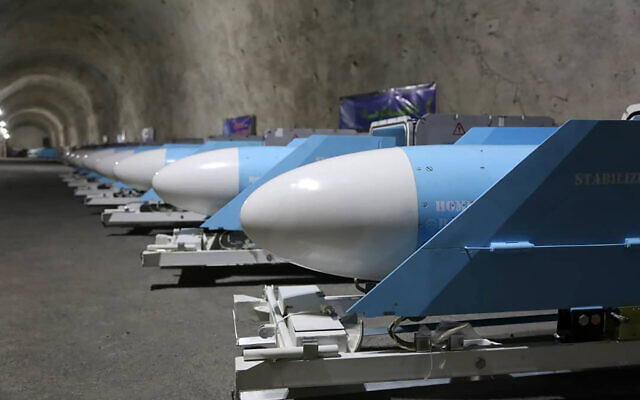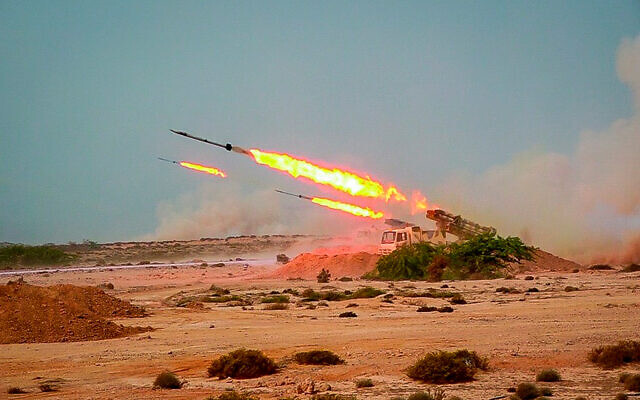The Iranian Defense Ministry says it was expanding its defense efforts beyond the borders of the country, in an apparent message of deterrence to Israel and the West, as hopes for a return to the 2015 nuclear deal continue to fade.
“Our country has an important role to play in strengthening the resistance front and expanding the radius of defense of national security beyond the borders of the country,” the ministry said in a message on Saturday for Defense Industries Day, the Moj News Agency reported.
The ministry stated that Iran’s military plan includes “strengthening the defensive force and constantly updating the ability to deal with the threats of our enemies.”
“We will not hesitate to strengthen our military capabilities, including the missile program designed solely for defense purposes,” it added.
The statement came as the foreign ministries of Germany, France, and Britain expressed “grave concern” over Iran’s growing violations of the moribund 2015 nuclear accord.
The International Atomic Energy Agency (IAEA) in Vienna confirmed last week that Iran has produced uranium metal enriched up to 20 percent for the first time, and has significantly increased its production capacity of uranium enriched up to 60%.
The production of uranium metal is prohibited by the 2015 nuclear deal, known as the Joint Comprehensive Plan of Action, or JCPOA, which promised Iran economic incentives in exchange for limits on its nuclear program, and is meant to prevent Tehran from developing a nuclear bomb.
On Thursday, Germany, France and Britain — the western European members of the JCPOA — called the moves by Iran “serious violations” of its commitment under the JCPOA. They said that “both are key steps in the development of a nuclear weapon and Iran has no credible civilian need for either measure.”
Iran insists that it is not interested in developing a bomb, and that the uranium metal is for its civilian nuclear program.
The United States unilaterally pulled out of the nuclear deal in 2018, with then-US president Donald Trump saying it needed to be renegotiated.
Since then, Tehran has been steadily increasing its violations of the deal to put pressure on the other signatories to provide more incentives to Iran to offset crippling American sanctions reimposed after the US pullout.
The western Europeans, as well as Russia and China, have been working to try to preserve the accord.
US President Joe Biden has said that he is open to rejoining the pact, but that Iran needs to return to its restrictions, while Iran has insisted that the US must drop all sanctions.
Months of talks have been held in Vienna with the remaining parties of the JCPOA shuttling between delegations from Iran and the US.
The last round of talks ended in June with no date set for their resumption.
Hopes for an Iranian return to the accord have dwindled significantly following the ascension of Iran’s new president, hardliner Ebrahim Raisi.
This story first appeared in Times of Israel, https://www.timesofisrael.com/iran-says-it-is-expanding-defense-beyond-borders-will-continue-missile-program/?utm_source=The+Daily+Edition&utm_campaign=daily-edition-2021-08-22&utm_medium=email

